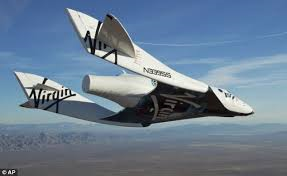
Breaking News
 Global Exclusive: The January 6th Pipe Bomber's Identity Has Been Discovered,...
Global Exclusive: The January 6th Pipe Bomber's Identity Has Been Discovered,...
 Capitol Police Officer Shauni Kerkhoff Identified as J6 Bomber...
Capitol Police Officer Shauni Kerkhoff Identified as J6 Bomber...
 Why Dual Engine Failure Changes Everything -- Louisville Crash Update
Why Dual Engine Failure Changes Everything -- Louisville Crash Update
 Transforming Storage Shelf / Workbench - Small Space Organization
Transforming Storage Shelf / Workbench - Small Space Organization
Top Tech News
 HUGE 32kWh LiFePO4 DIY Battery w/ 628Ah Cells! 90 Minute Build
HUGE 32kWh LiFePO4 DIY Battery w/ 628Ah Cells! 90 Minute Build
 What Has Bitcoin Become 17 Years After Satoshi Nakamoto Published The Whitepaper?
What Has Bitcoin Become 17 Years After Satoshi Nakamoto Published The Whitepaper?
 Japan just injected artificial blood into a human. No blood type needed. No refrigeration.
Japan just injected artificial blood into a human. No blood type needed. No refrigeration.
 The 6 Best LLM Tools To Run Models Locally
The 6 Best LLM Tools To Run Models Locally
 Testing My First Sodium-Ion Solar Battery
Testing My First Sodium-Ion Solar Battery
 A man once paralyzed from the waist down now stands on his own, not with machines or wires,...
A man once paralyzed from the waist down now stands on his own, not with machines or wires,...
 Review: Thumb-sized thermal camera turns your phone into a smart tool
Review: Thumb-sized thermal camera turns your phone into a smart tool
 Army To Bring Nuclear Microreactors To Its Bases By 2028
Army To Bring Nuclear Microreactors To Its Bases By 2028
 Nissan Says It's On Track For Solid-State Batteries That Double EV Range By 2028
Nissan Says It's On Track For Solid-State Batteries That Double EV Range By 2028
Two hour Sydney-London flight on track for 2018 launch

The project, which saw US and Australian military scientists combine resources, is on track to launch in 2018 after its latest engine trial hit the target speed of Mach 7.5 - more than seven times the speed of sound.
It could revolutionise global air travel and prove cost-effective access to space, Alex Zelinsky, the chief Australian scientist working on the project said.
For a jet or rocket to be classified as hypersonic, it must travel at five times the speed of sound, or Mach 5. The latest trial at the world's largest land testing site in Australia saw a rocket hit the target speed of Mach 7.5 (5760 miles per hour), reaching an altitude of 279 kilometres.
"We want to be able to fly with a hypersonic engine at Mach 7," Michael Smart, a hypersonic expert from the University of Queensland who is working on the test, told the AFP. "You could fly long distances over the Earth very, very quickly.

 Carbon based computers that run on iron
Carbon based computers that run on iron

